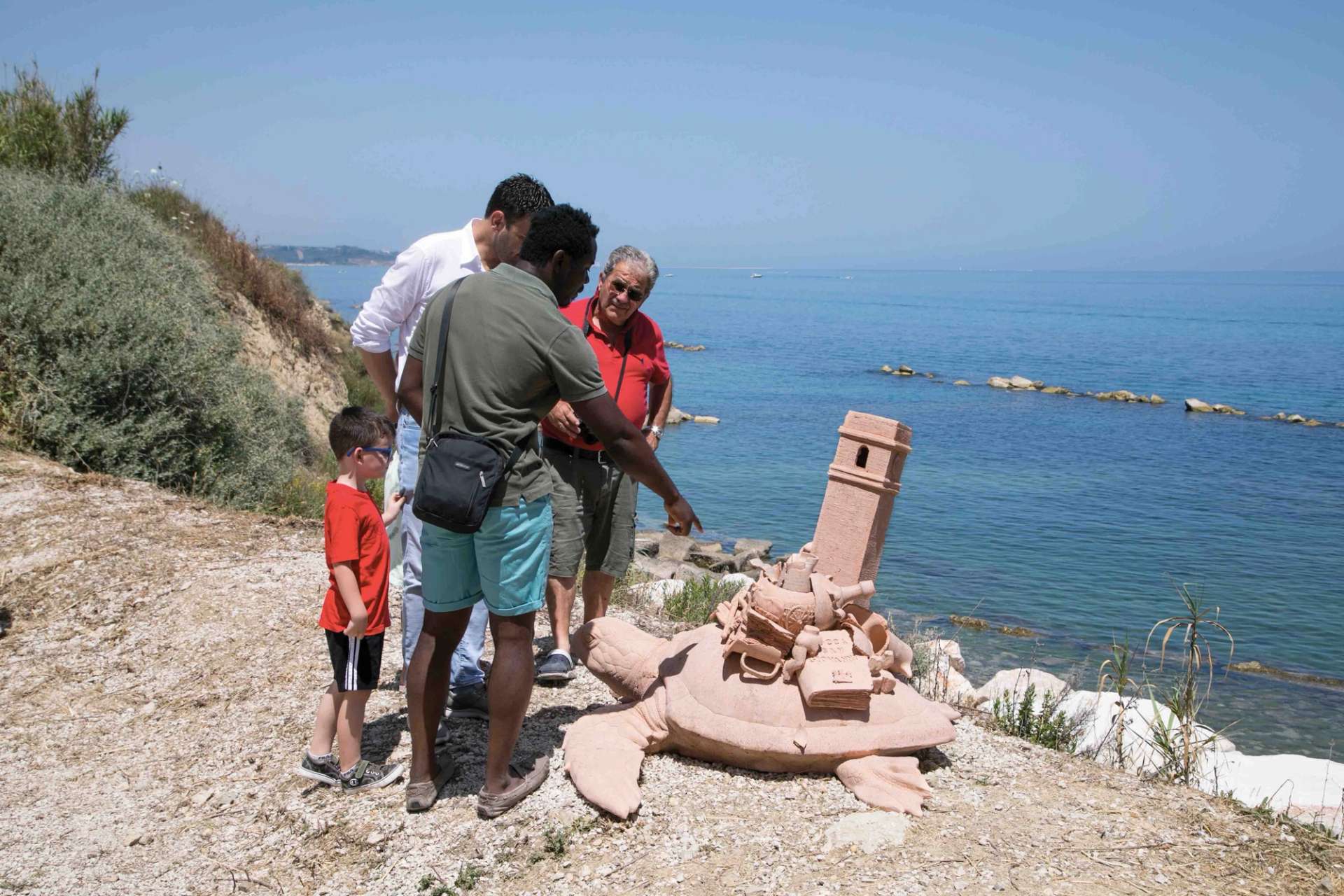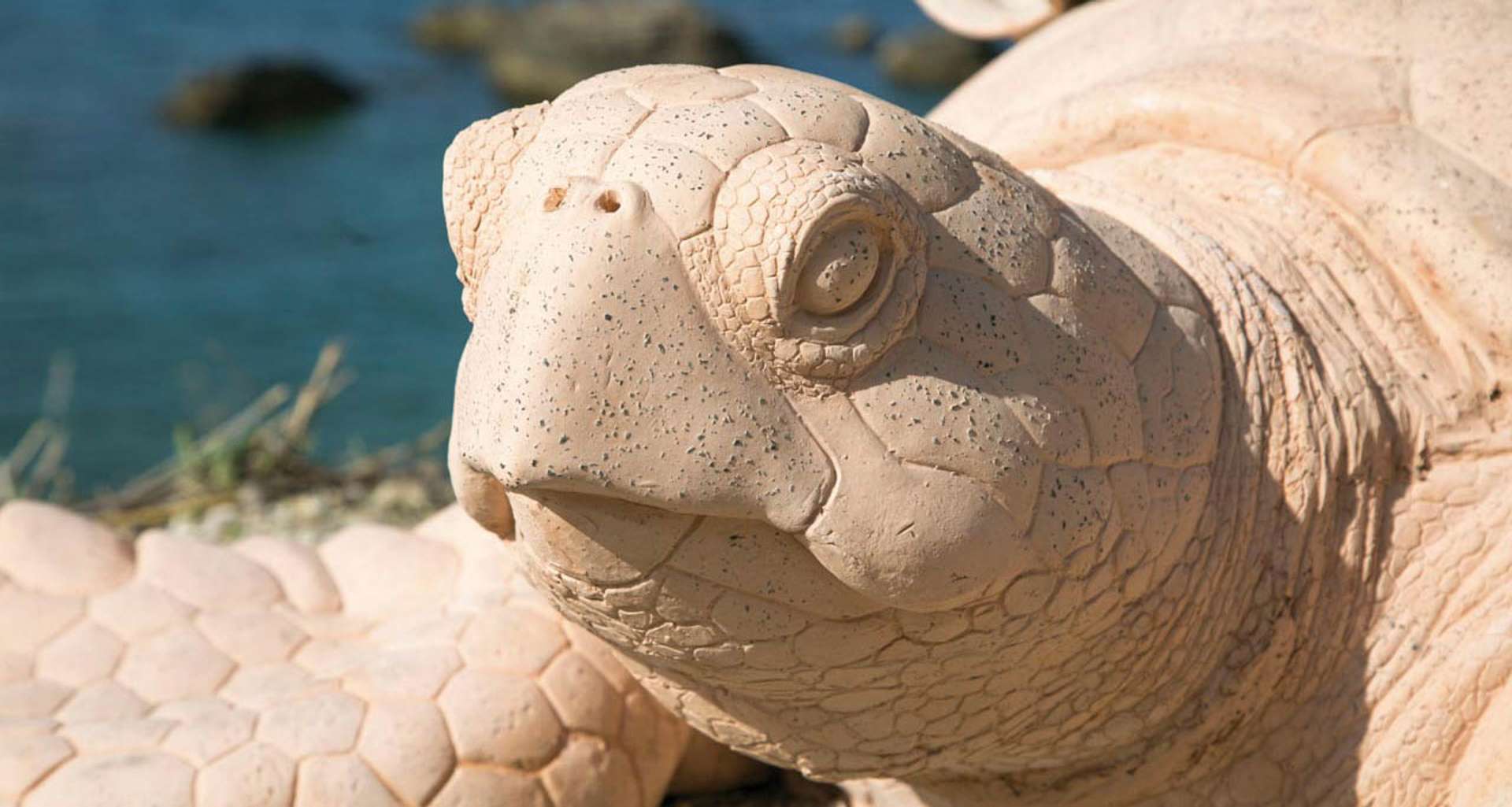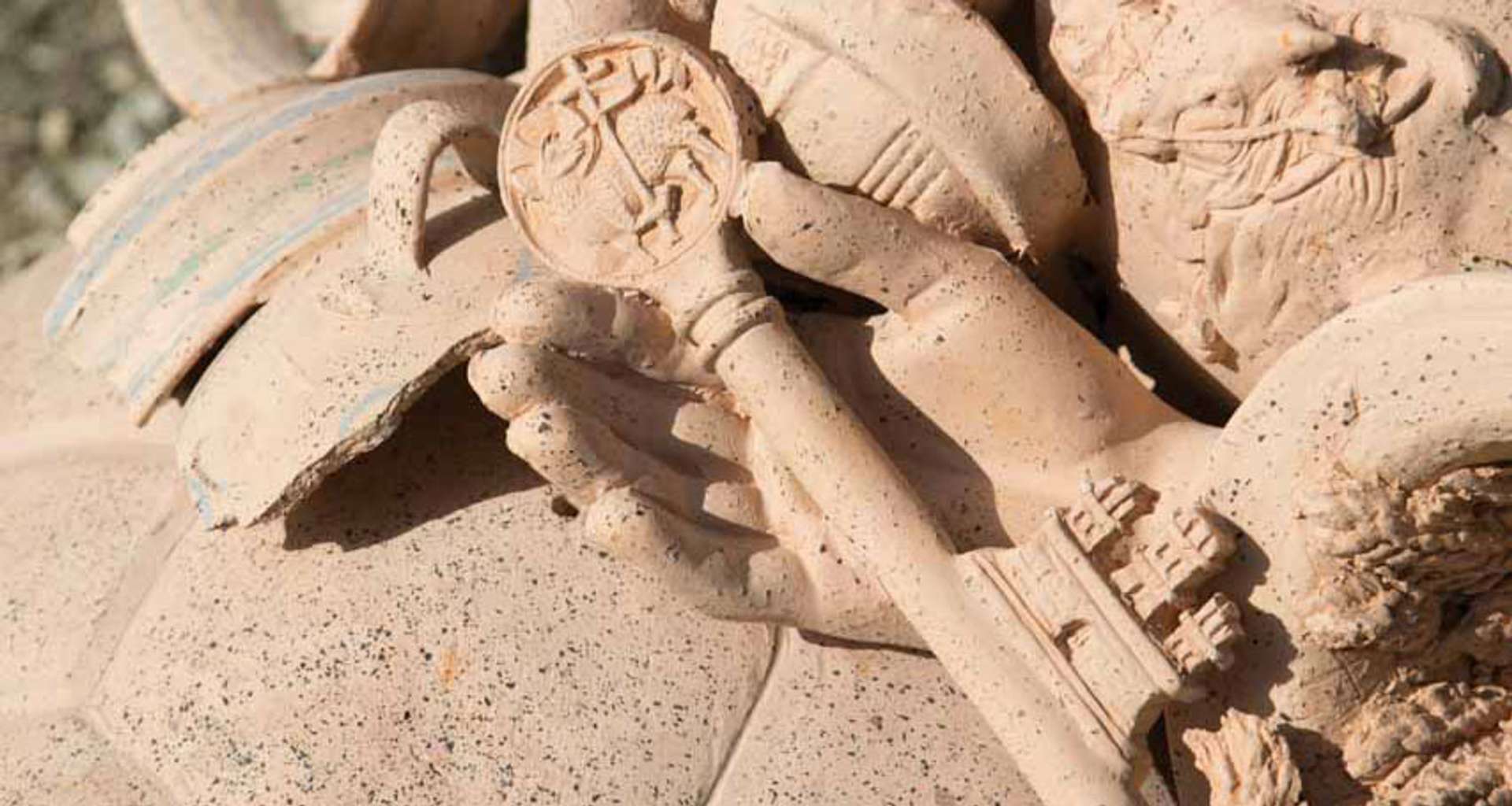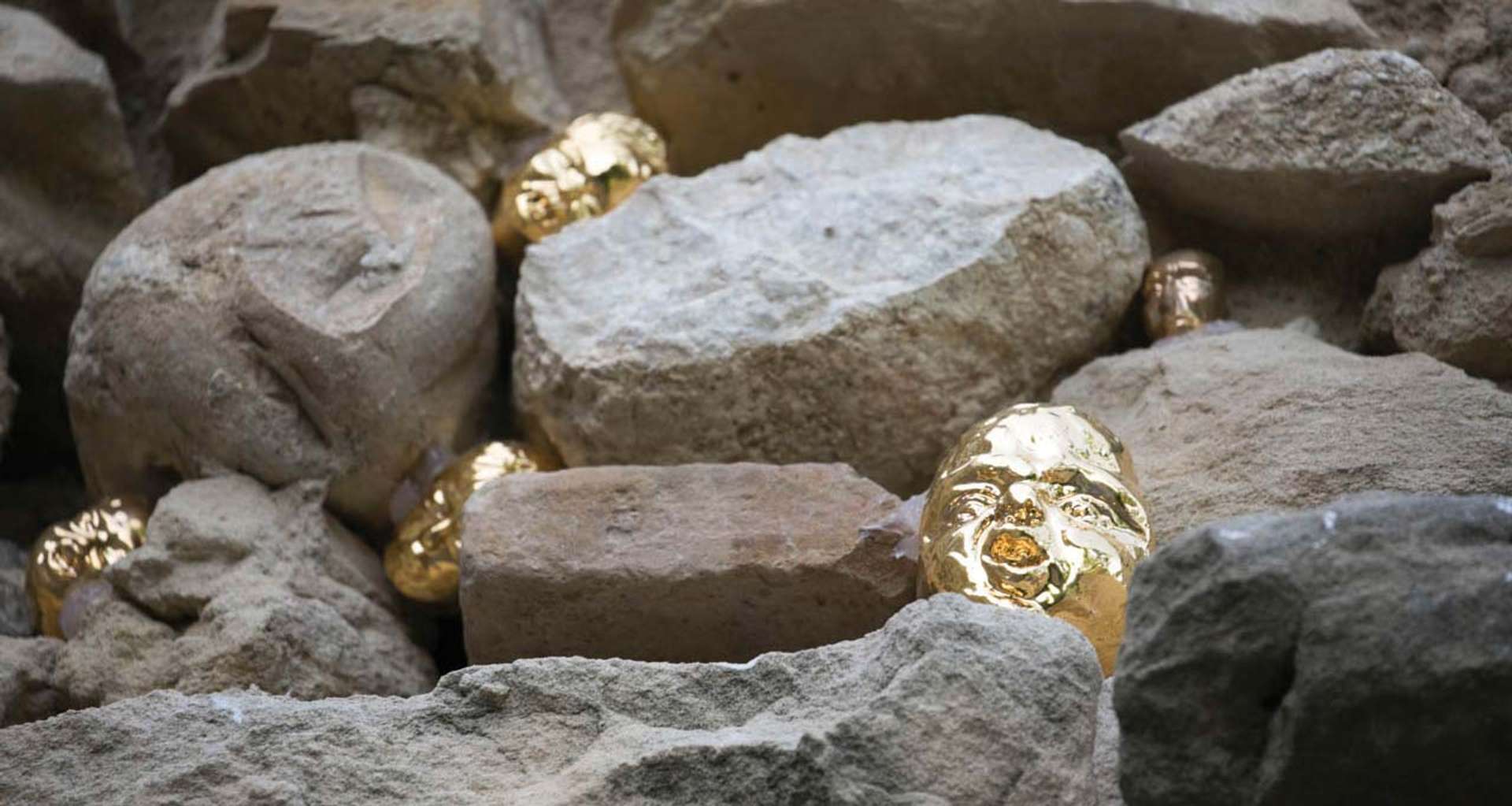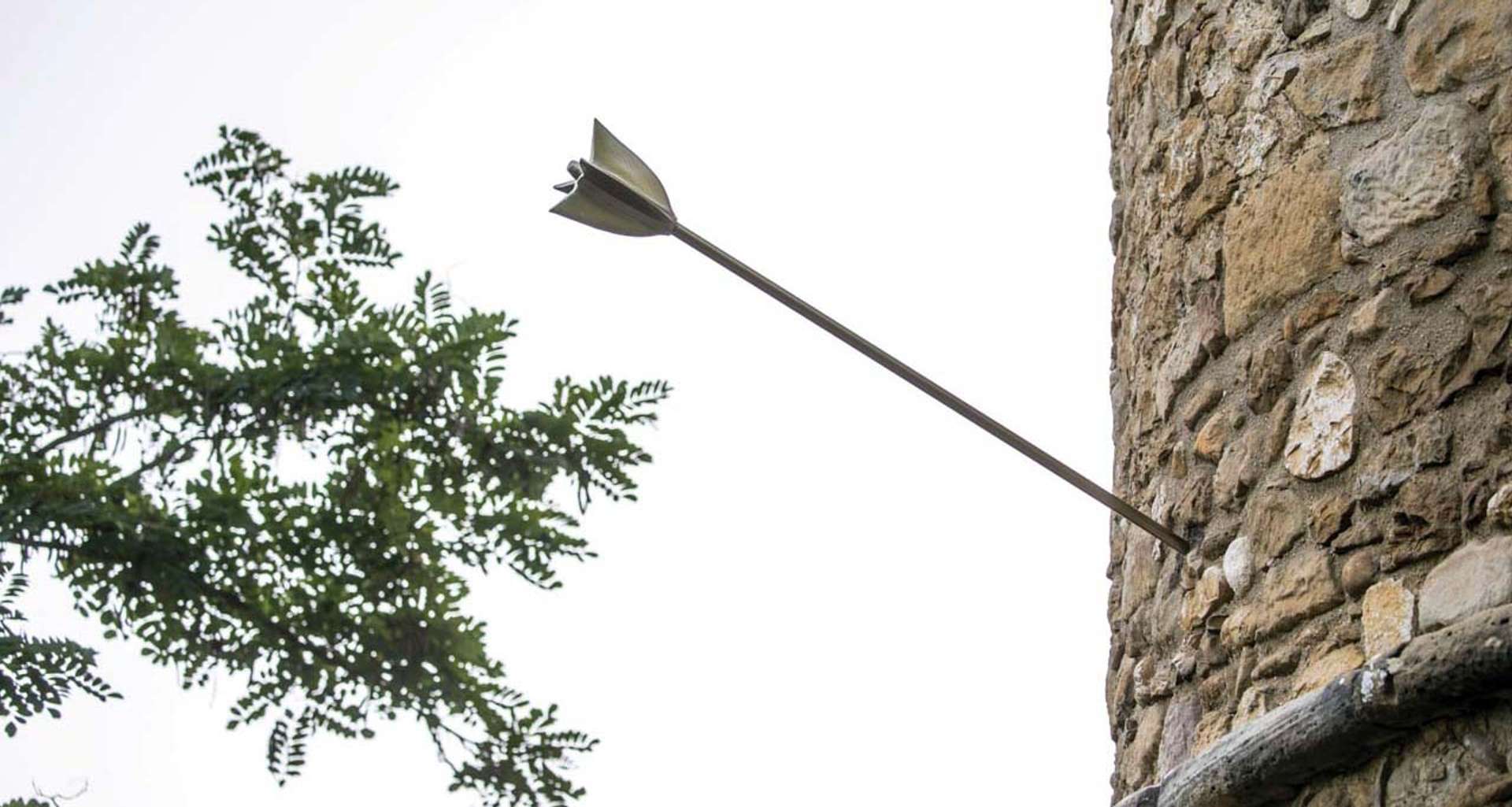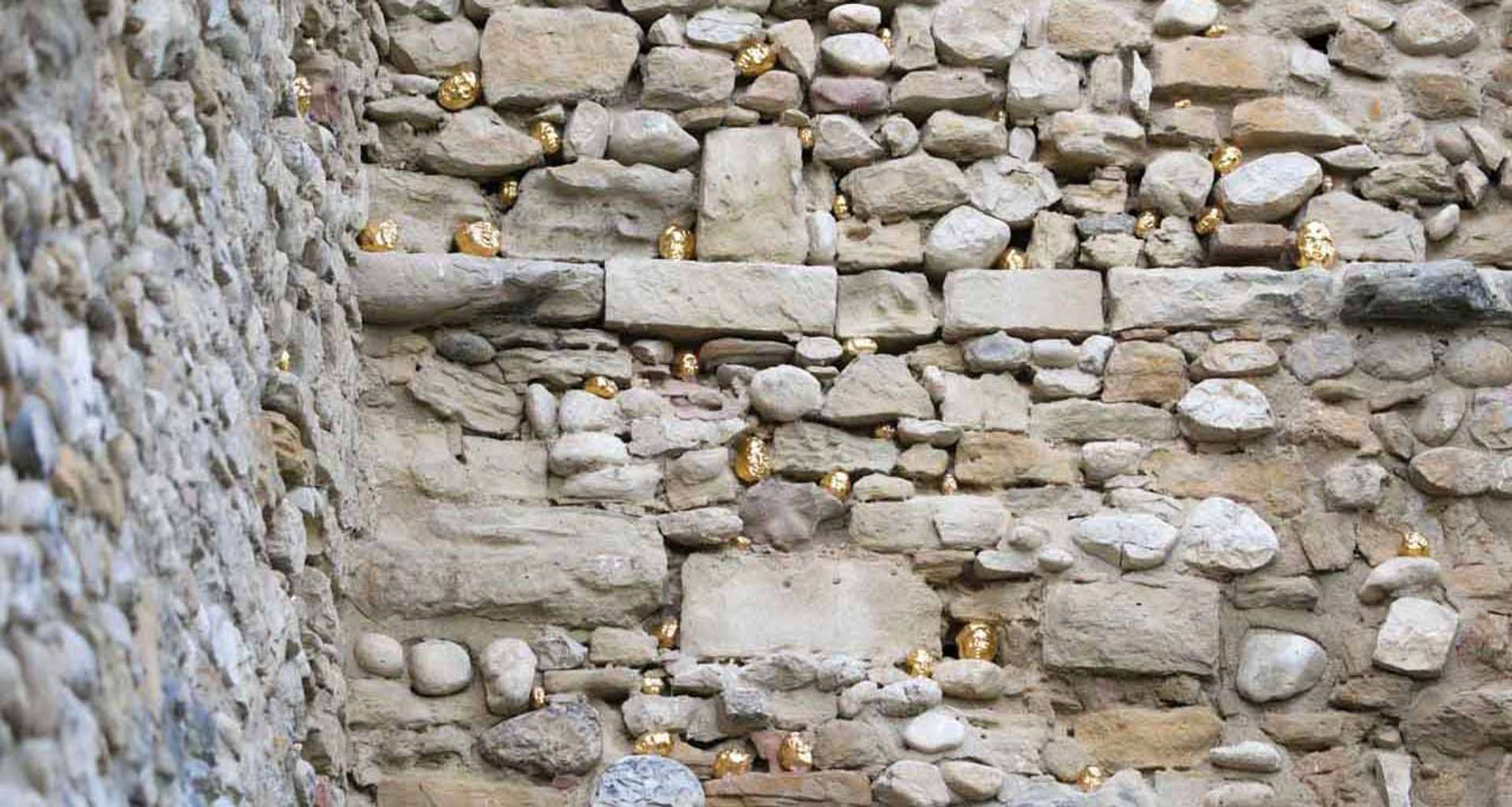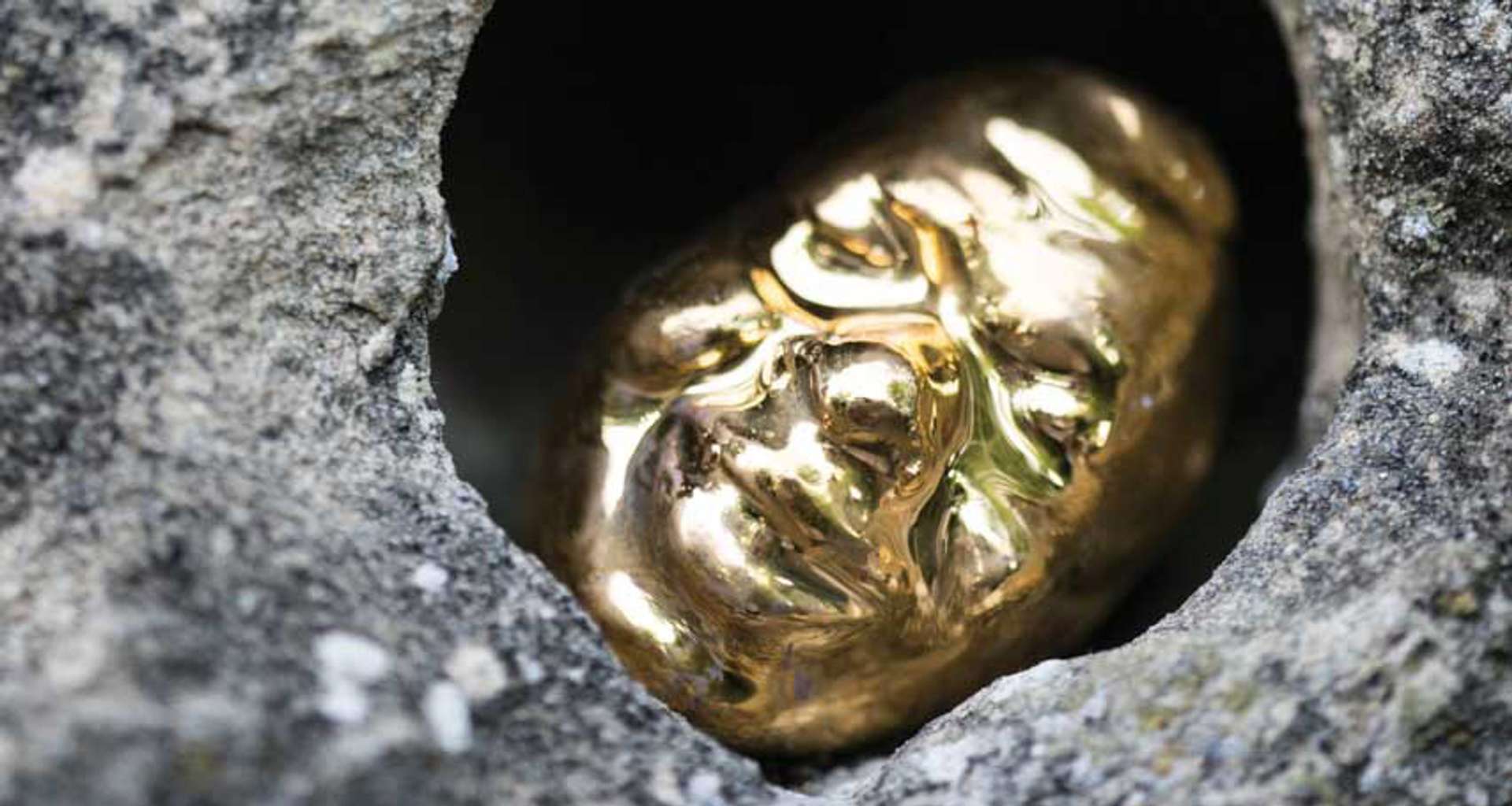Victor Fotso Nyie’s intervention is widespread throughout the village of Rocca San Giovanni, is included in the existing architecture, in the historic buildings, in the anthropological aspects and in the background seascape.
The Anchestor visit is a ceramic sculpture conceived on the basis of a real experience, the discovery of a carapace on the beaches of Rocca San Giovanni. The imagination led the artist to reconstruct the marine life of this ancestral animal before its final landing on earth. A metaphor for the history of man.
Admiring what remains of the medieval walls built by the will of Oderisio I, abbot of the Monastery of San Giovanni in Venere, hundreds of golden ceramic heads look out from the cavities of the inner walls giving rise to a choreography of Constellations.
From heaven to earth these sentries watch over the village and its inhabitants.
As if shot by an archer, Stella Cadente is an arrow that soars into the sky before reaching its predestined place: a protected, sheltered place.
ㅤ
Permanent works:
01. Victor Fotso Nyie, The Ancestor visit, 2022, scultura in ceramica, 150 x 130 x 80 cm
Rocca San Giovanni (CH), Abruzzo
ㅤ
02. Victor Fotso Nyie, Costellazioni, 2022, installazione, 100 elementi, ceramica smaltata e oro; variabili, da 3 a 7 cm
Rocca San Giovanni (CH), Abruzzo
ㅤ
03. Victor Fotso Nyie, Stella cadente, 2022, installazione, ceramica smaltata e oro; 85 x ⌀ 1.5 cm
Rocca San Giovanni (CH), Abruzzo
NOTICED DURING MY STAY IN ROCCA SAN GIOVANNI THE DESIRE OF THE INHABITANTS AND THE MUNICIPALITY TO PRESERVE THE MEMORY OF THE PAST SO I DECIDED TO CREATE NEW SYMBOLS, ALSO TO KEEP ALIVE THIS DESIRE, ESSENTIAL FOR FUTURE GENERATIONS AND FOR TERRITORIAL DEVELOPMENT
Victor Fotso Nyie (Douala, 1990) is a Cameroonian artist working in Italy, in Faenza. The fulcrum of his artistic research is the condition of contemporary African man, alienated and suffering due to an unfinished past of enslavement and exploitation. In the subjects depicted the emotional and spiritual dimension is omnipresent and arouses an immediate visual impact that contrasts with the invisibility and contempt to which the black body is usually subjected outside the African continent. Through the use of primary forms and suggestive vibrations of colours, the works are charged with energies that produce a space-time continuum: thus works that recall the generating force of the earth merge with others that represent the globalized world in a metaphorical key. Upcoming exhibitions: Off Gallery, Bologna, IT (solo show, 2022) Galleria comunale d’Arte, Faenza, IT (solo show, 2022) Pinacoteca Civica, Pieve di Cento, IT (solo show,2022) Istituto italiano della cultura, Paris, FR (2022) Homo Faber, Venice, IT (2022). Recent exhibitions: Rimembranza, Palazzo Turchi di Bagno, Ferrara, IT (solo show, 2021); Mediterranea 19 Young Artists Biennale, School of Waters, Republic of San Marino, SM (2021); Resilienza, Museo MAGA, Gallarate, IT (solo show, 2021); MCZ Territorio, Museo Carlo Zauli, Faenza, IT (solo show , 2021); MAD per Black History Month Florence 2021, Le Murate, Florence, IT (2021); MediTERRAneo – XXVII concorso di ceramica contemporanea, Chiostro del complesso conventuale del Paolotti, Grottaglie, IT (2020); III Biennale d’Arte don Franco Patruno, Museo MAGI ’900, Pieve di Cento (BO), IT (2019); To be going to, P420, Bologna, IT (2019); Il colore interiore, Le strade bianche, Prioria di S. Lorenzo, Montelupo Fiorentino, IT (2019); Banca BCC, Faenza, IT (solo show) (2018); Galleria Artforum, Bologna, IT (2018); Open Tour, Accademia di Belle Arti di Bologna, Bologna, IT (2018); Biennale d’Arte Don Patruno, Cento, IT (2017); Terza edizione del Concorso Nazionale 2017 “CeramicAppignano” Convivium, Appignano, IT (2017); ArtSTORIA 5x5x5: 5 film, 5 artisti, 5 poetiche, Cinema Astoria, Ravenna, IT (solo show) (2017).
ADMIRING WHAT REMAINS OF THE MEDIEVAL WALLS BUILT BY THE WILL OF ODERISIO I, ABBOT OF THE MONASTERY OF SAN GIOVANNI IN VENERE, HUNDREDS OF GOLDEN CERAMIC HEADS LOOK OUT FROM THE CAVITIES OF THE INNER WALLS GIVING RISE TO A CHOREOGRAPHY OF CONSTELLATIONS
Rocca San Giovanni is a village of about 2,000 inhabitants in the province of Chieti, north-east of Lanciano. It is part of the initiative Borghi più belli d’Italia. It stands on a rocky hill overlooking the splendid Costa dei trabocchi. The origins of Rocca San Giovanni date back to around the year 1000 thanks to Oderisio I and Oderisio II, abbots of the Abbey of San Giovanni in Venere, who built the castle, the walls and the three towers to defend the monks and inhabitants of the area from possible attacks. The historic centre dates back to the fourteenth century and is built in a medieval style. Some old photos show that there used to be an isolated tower that was destroyed during the bombing of the Second World War. Attached to the historic centre there is a pointed arched door made of sandstone blocks.The village develops in a herringbone pattern, and used to be entirely surrounded by walls. Today, you can only see the remains of these walls together with a well-preserved castellated tower called “Torrione dei Filippini” which overlooks a tree-lined road that is pleasant to walk down.
